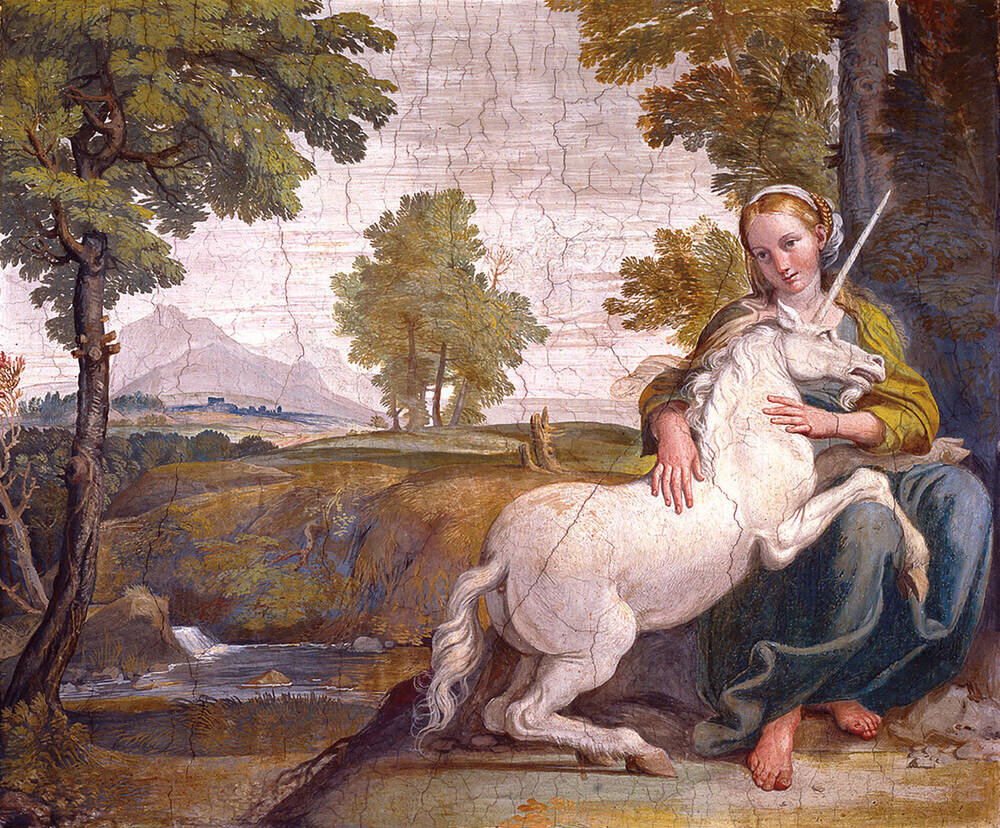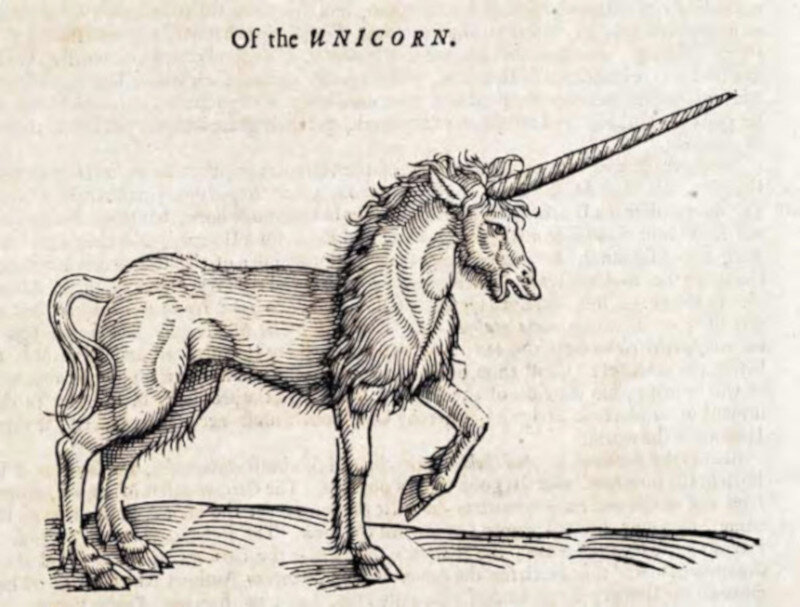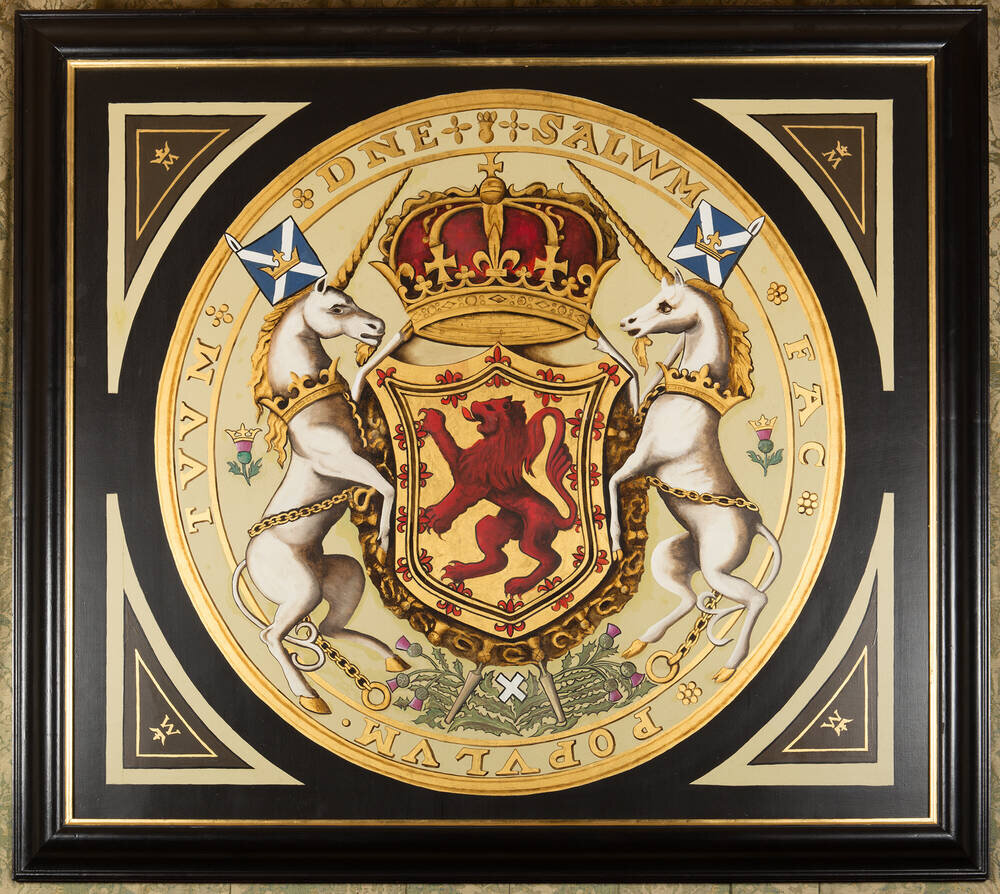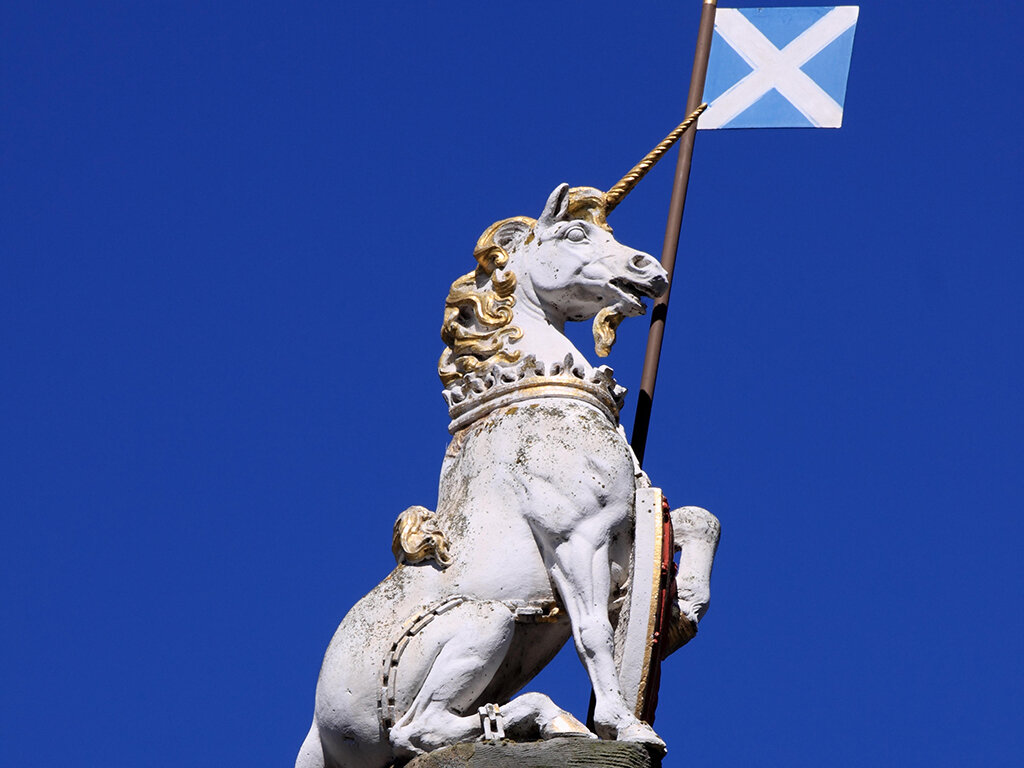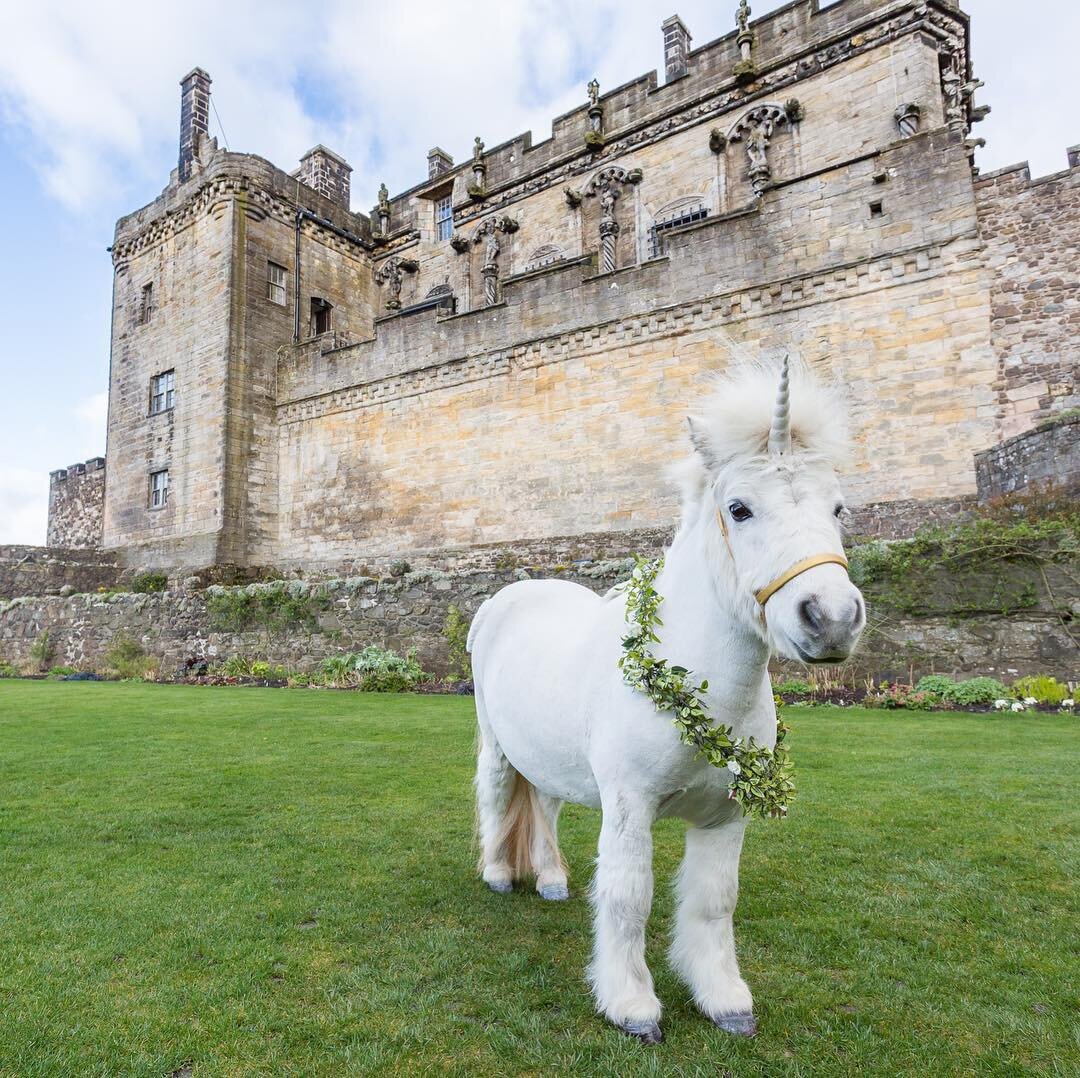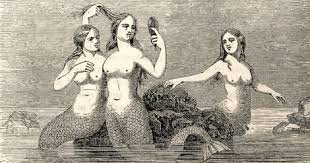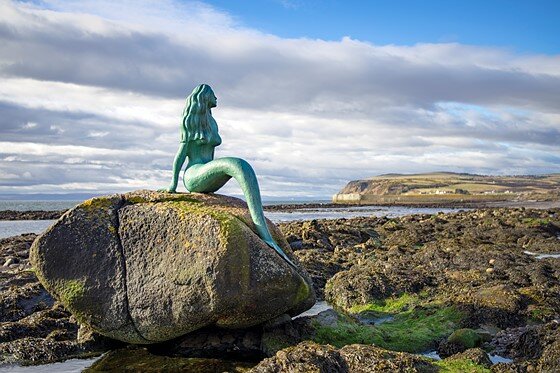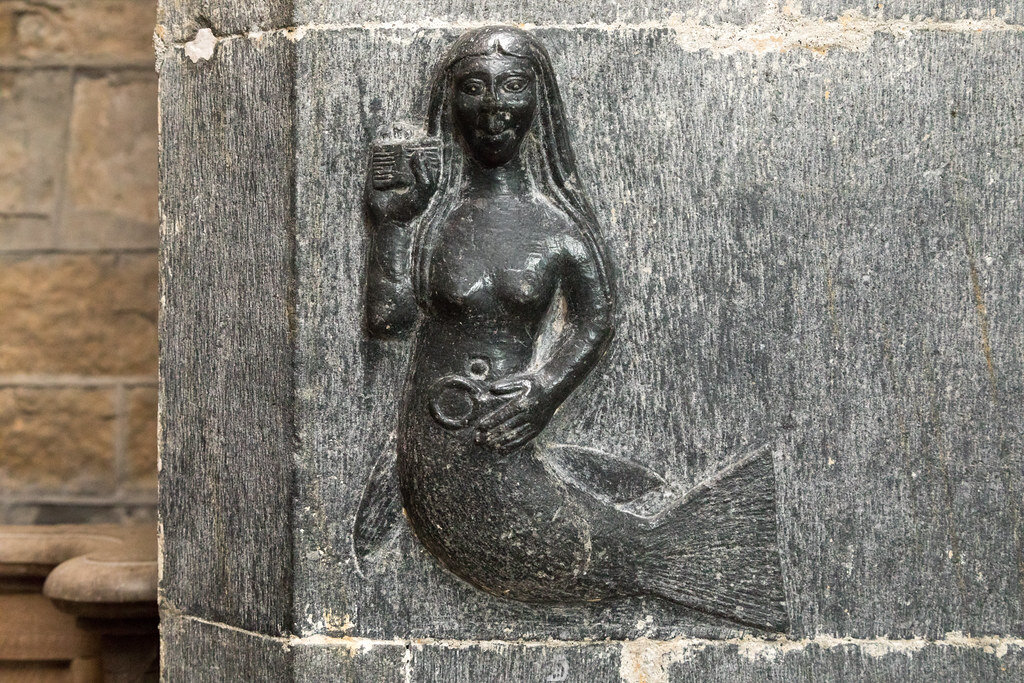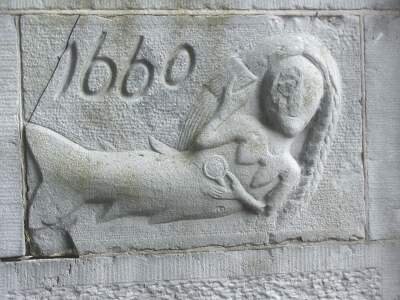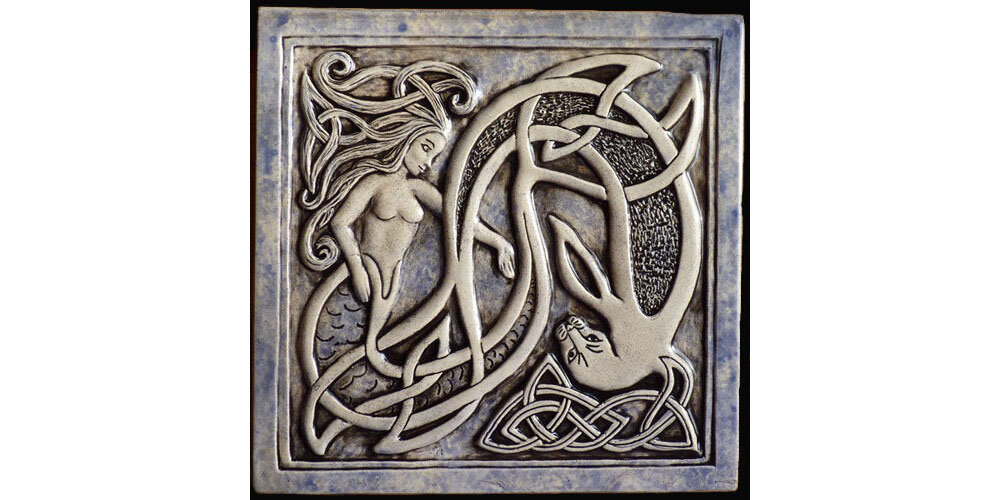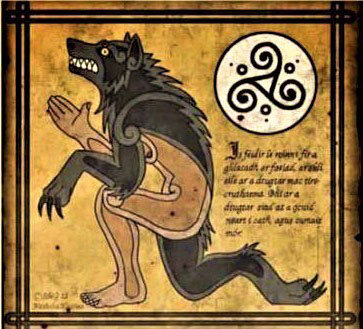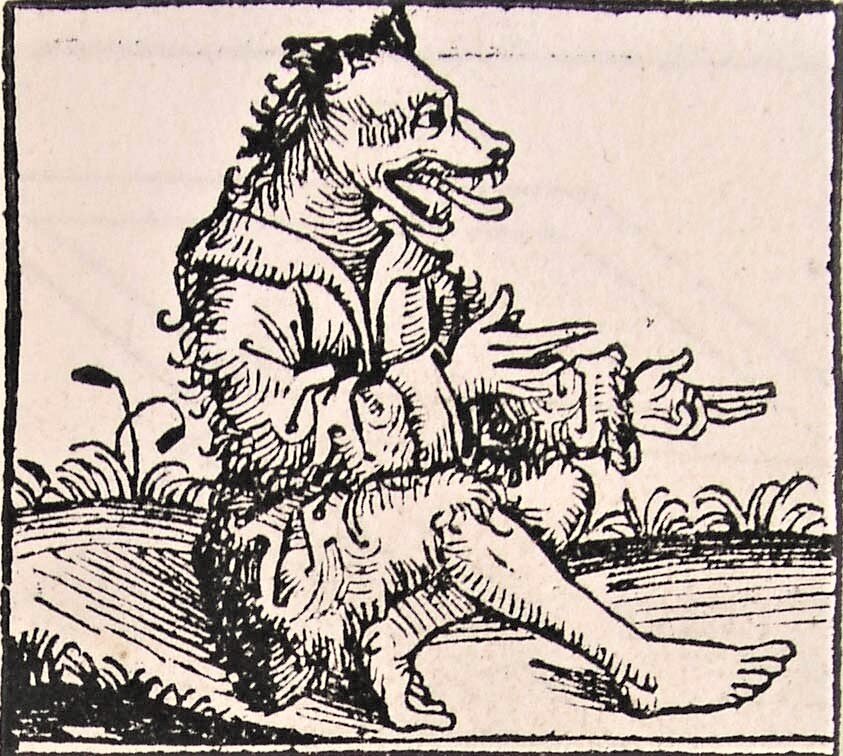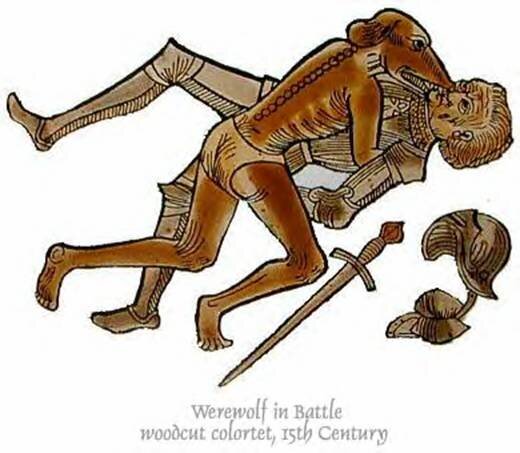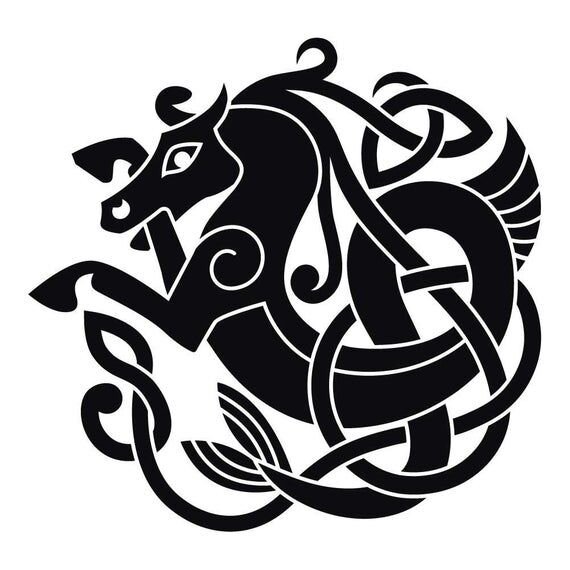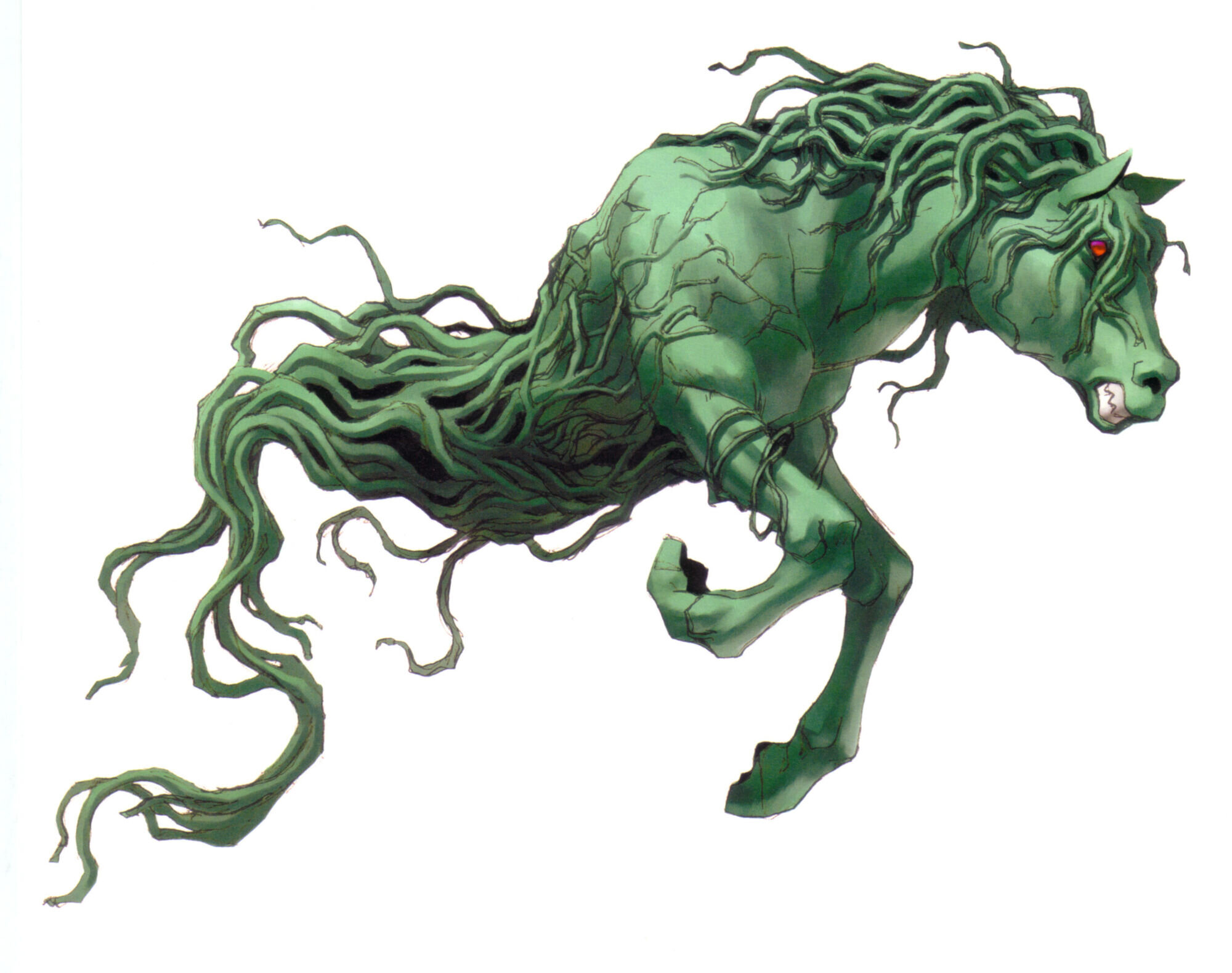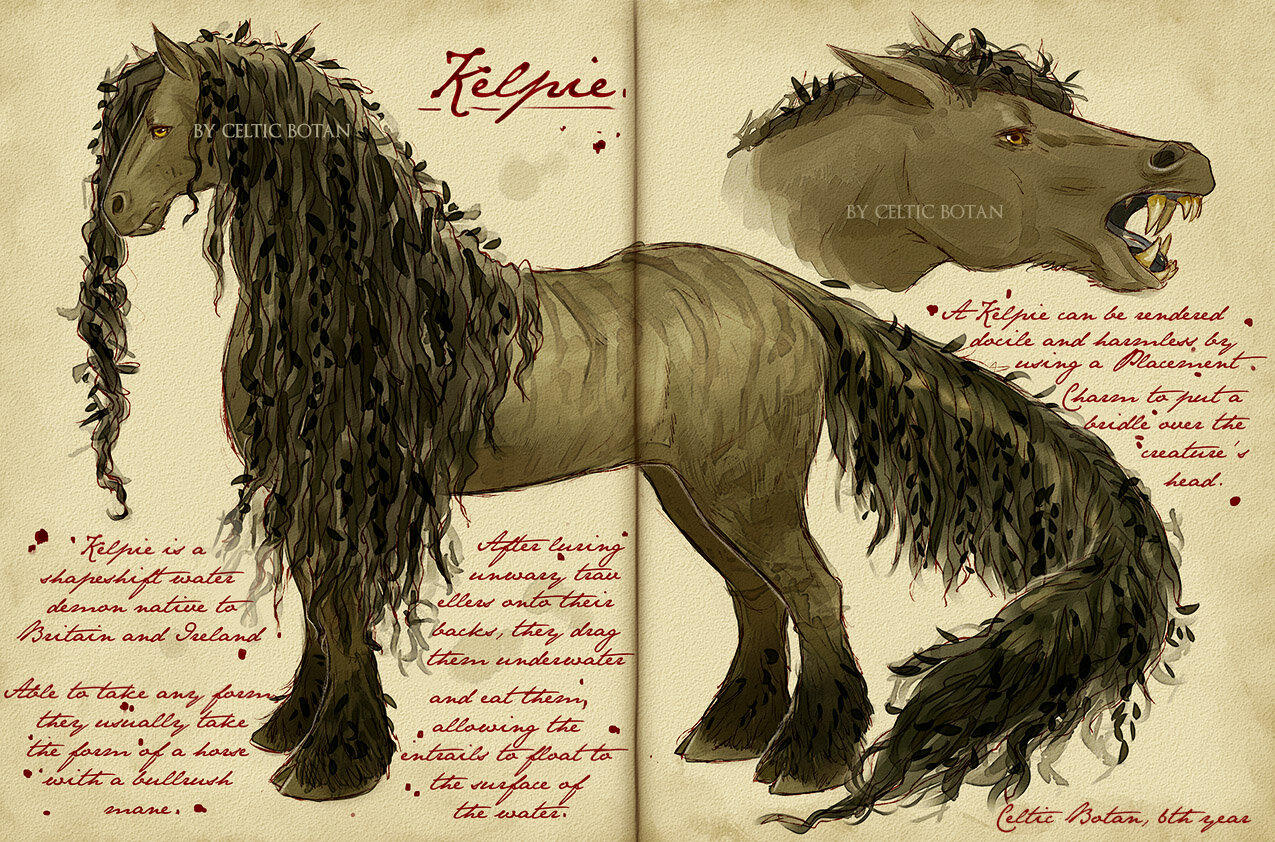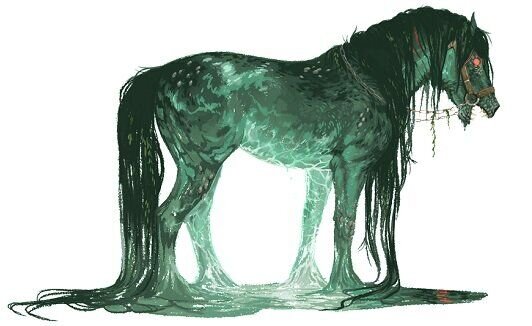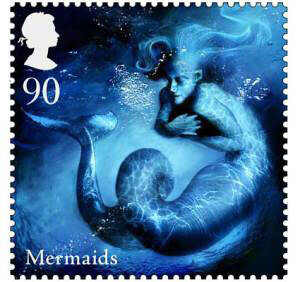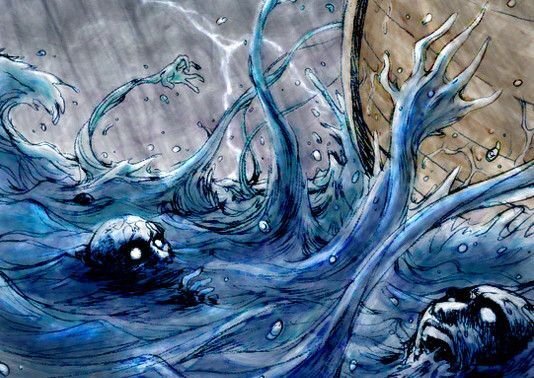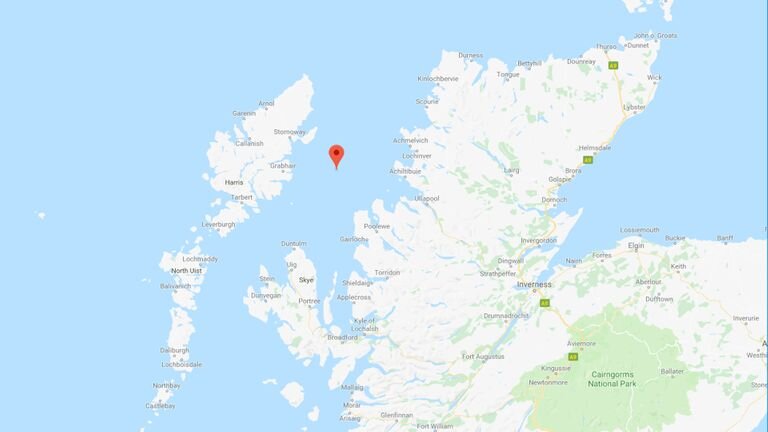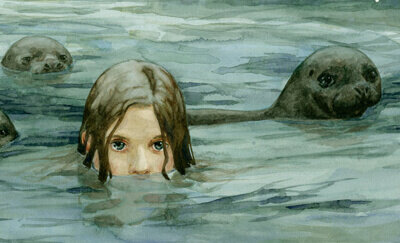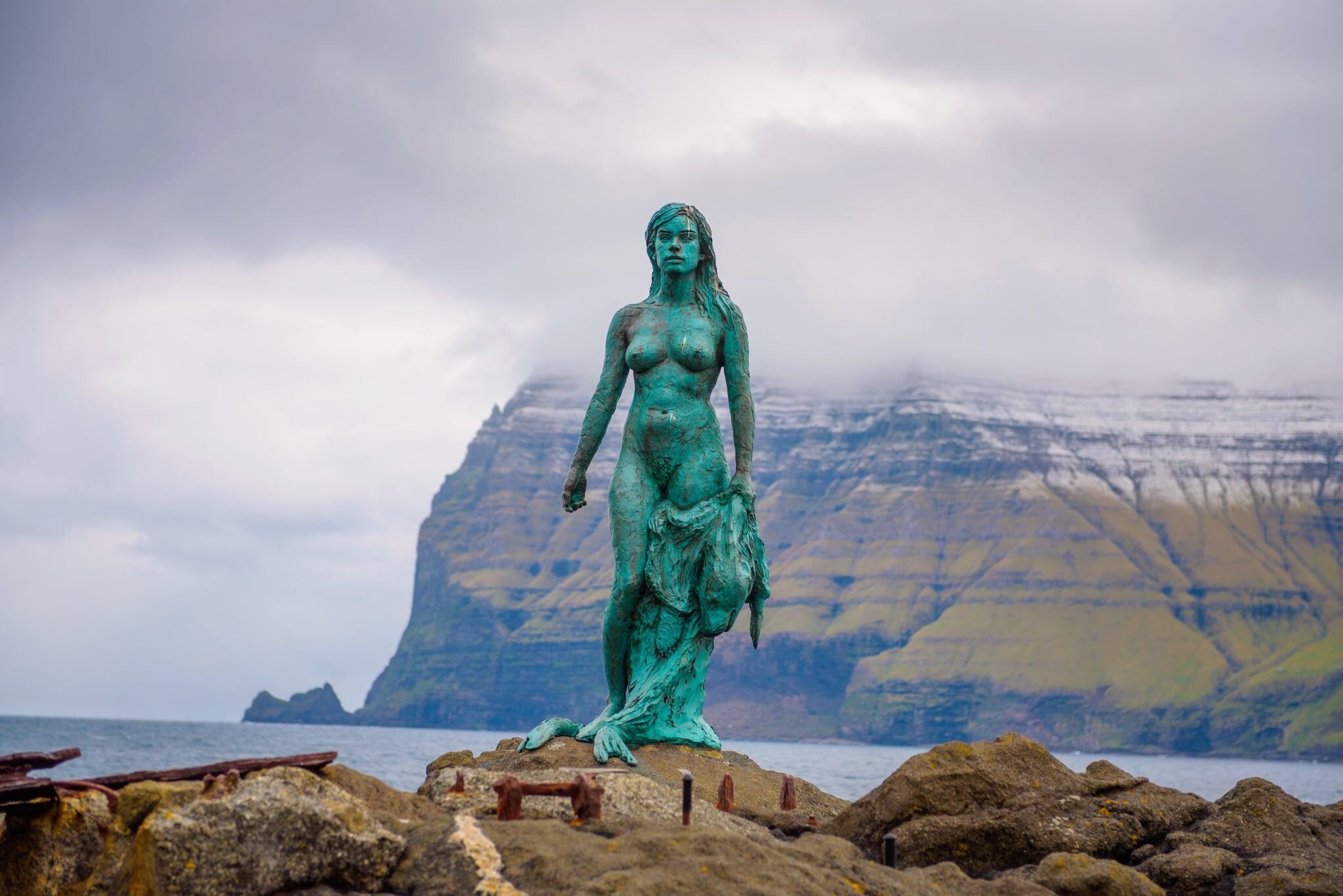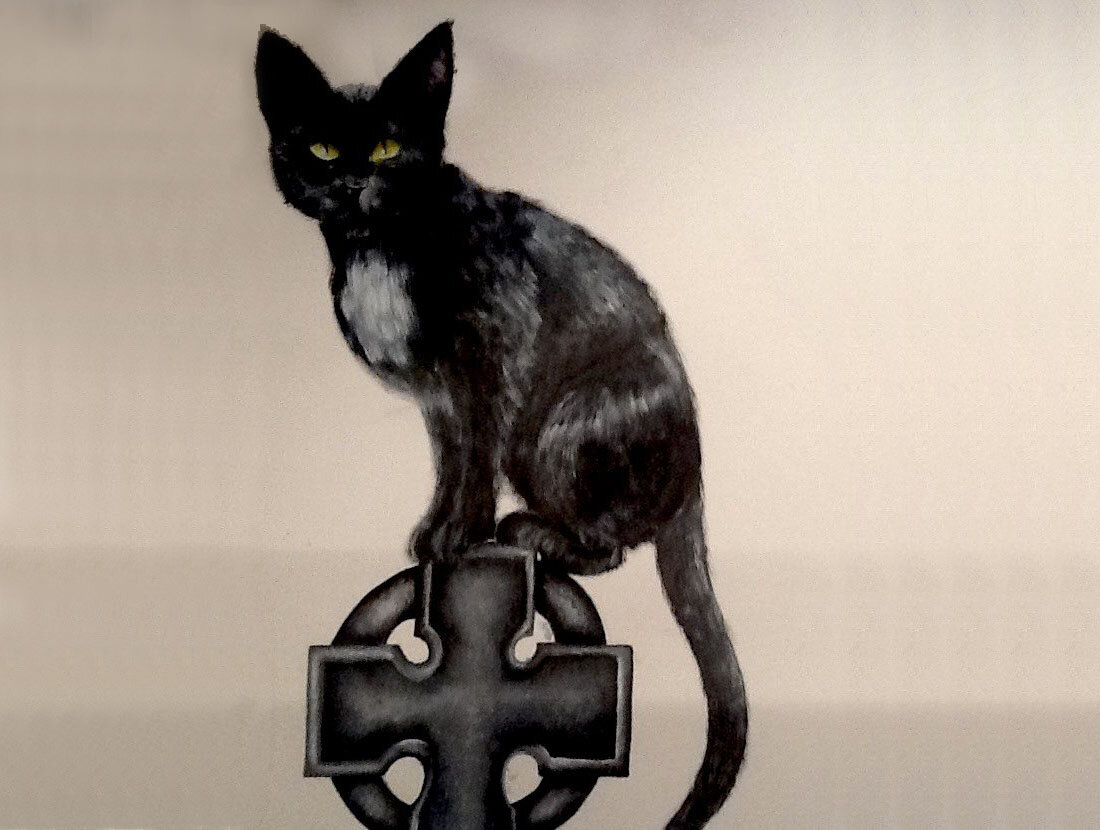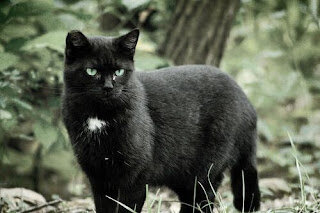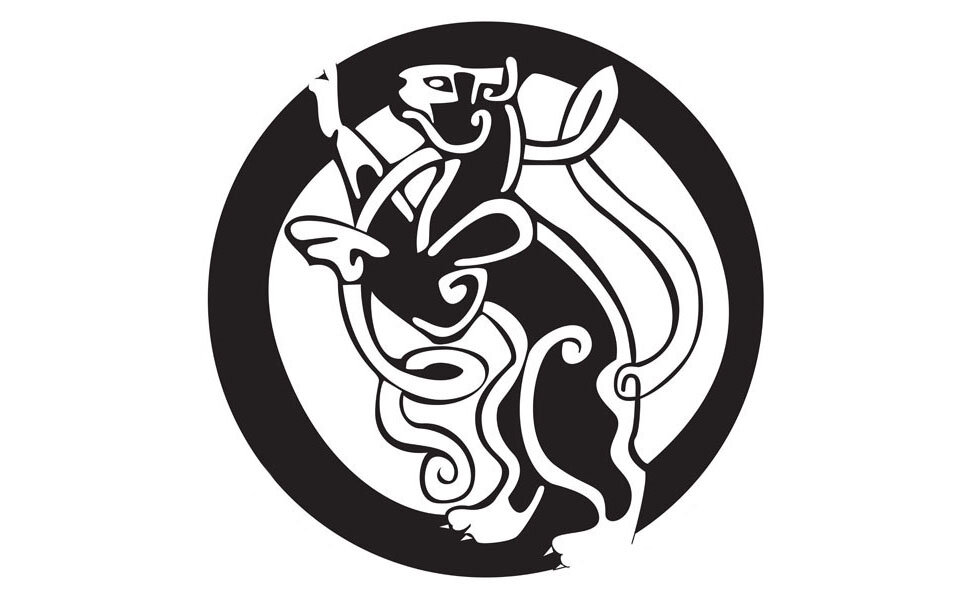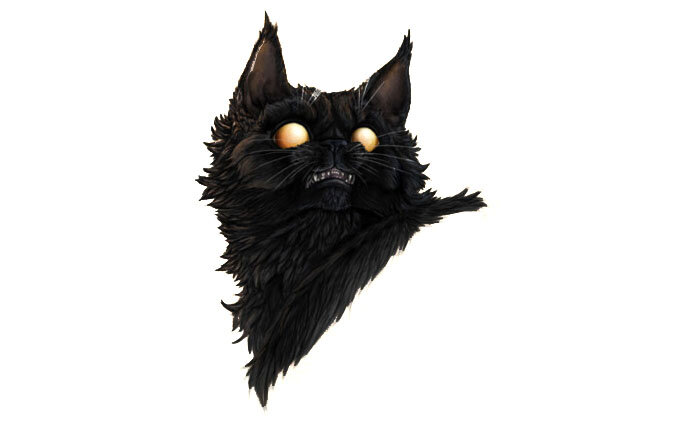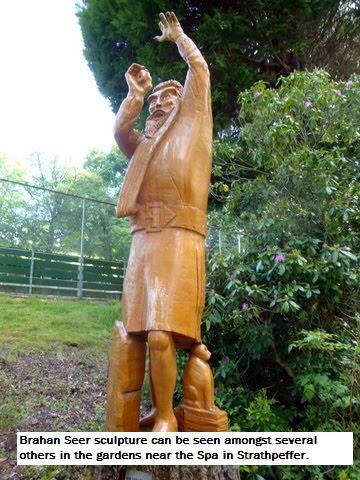F O L K L O R E
Unicorn
In Celtic mythology the unicorn was a symbol of purity and innocence, as well as masculinity and power. Tales of dominance and chivalry associated with the unicorn may be why it was chosen as Scotland’s national animal.
The unicorn was first used on the Scottish royal coat of arms by William 1 in the 12th century. In the 15th century, when King James III was in power, gold coins even appeared with the unicorn on them. When Scotland and England unified under the reign of James VI of Scotland in 1603, the Scottish Royal Arms had two unicorns supporting a shield.
This magic animal has awed people for over 3,000 years and continues to enjoy popularity with no sign of falling out of favour. In fact, the unicorn is mentioned in two of the world’s oldest and most prominent religious books: The Bible and the Quran.
For more on unicorns, simply google! or see this fun blog
From BuchananBanner #14-1, page 6
Birth Superstitions
Amoung Scottish beliefs concerning birth, the best known is one that appears to be peculiarly our own - the conviction that the seventh child of a seventh child will always grow up to be 'fay,' or, at least, to turn our to be 'no canny.'
A child born at midnight is, also, regarded as being one who will live to be 'different' - either for good or for ill. Usually, the child born at midnight, or in the 'wee sma'oors,' is expected to manifest in later life some peculiar brilliance of intellect, even though such brilliance should be allied to a little wildness. Our National Poet's birth gives an excellent example of this particular beliefs coming true on at least one occasion - was not Burns born in the early hours?
When a child is first taken from the room in which it was born, it must be taken upwards, and never down. If the child is born in a ground-floor room it must be carried upstairs; if born upstairs, it must be taken still higher - to an attic, or even to the roof; but if neither of these movements is possible, there is a subterfuge that will suffice - a chair or a box, or some other raised obstacle must be placed in the doorway of the room, and whoever caries the child on its first short journey must make the necessary ascent.
The newly-born child, in the first few days of it's life, is exposed to the great danger of being stolen by the fairies, who are for ever on the look out for innocent babies, that they may take them in exchange for some of their evil ones. Something of this belief in the 'Changeling' is known all over Scotland, and, in an oblique fashion even to those modern mothers who may never have heard of the actual superstition itself. How often do we hear a mother saying of the wayward son or daughter: "That ane's nane o'mine'? meaning - though she may not recognize the significance of what she says, that the youngster though of her body is not of her spirit. Certain fathers, of course, may make use of the expression, with a much more practical implication behind it!
From: Scottish Lore and Folklore By Ronald Macdonald Douglas.
And from BuchananBanner #18-2, page 27
Fortunately, there are a number of precautions which may be taken to circumvent the fairies' efforts to steal the child. Any of these are a sure safeguard:
a barrier may be erected around a house which the fairies are powerless to pass;
someone, preferably the father, must walk around the building in a clockwise direction.
If it is not possible to walk around the building, as would be the case in an apartment building, there are other precautions which can be used. A knife placed in the cradle will do the trick;
care must be taken not to carry fire or light out of the house until the child is at least a week old.
Nor should, on any account, the newly-born infant be placed in anything other than a borrowed cradle at first. After the child has first slept in a borrowed cradle, a new one may be acquired.
To insure that the child will never know poverty, its right hand must be left alone at its first washing. All visitors, seeing the infant for the first time, should place a silver coin in its hand. It is considered unlucky to weigh or measure a newborn baby.
A cat, being an emissary of the Powers of Evil, must never be left in a room with the child.
Nor should the cradle ever be rocked when empty, either before or after the child is born.
The name that the child is to be given must never be spoken aloud until the minister speaks it at the christening ceremony. If anyone asks the name, they must not be told, nor may the minister be told by word of mouth; rather, he must be handed a slip of paper with the name written on it. On the way to its christening, the child must be carried, at least a part of the way, by a young unmarried woman who must have with her something to eat, usually a piece of bread and cheese, which she must present to the first man she meets, no matter who he may be.
The mother of a newborn infant must never leave the house after sunset until she has been to church. If she does, she runs the risk of being carried off by fairies to nurse one of their sick fairy children. It is believed that such an ailing fairy child can only be restored to health by being fed human milk.
From BuchananBanner #19-1, page 29
Fairies
The Scottish fairies bear little resemblance to the kindly fairy-folk of Ireland. By way of explanation: the Irish fairy-folk, the leprechaun and the "leavnin sidhe," for instance are all Gaels - the kindliest and the most hospitable race in the world. But the Scottish fairies are Picts, the original inhabitants of Caledonia. It could be expected then that they would be mischievous or devilish, being a product of such a barbaric and bloodthirsty race. The Romans said of them, "To robbery, murder and outrage, they give the lying name of government, and where they make a desert, they call it peace."
From such an ungracious race, then, come our Scottish fairies
Not all of them are bad, course. On the contrary, some of them are quite good-natured, and quite prepared to be helpful. But their offers if help should be politely refused or, if accepted, accepted with great caution.
In those limited areas where the Vikings are predominate, the fairies are sometimes known as Trolls (remember the Troll that lived under the bridge?) In the Gaelic they are spoken of as “Daoine Sithe" which translates roughly to "Men of Peace."
In some parts of Scotland they are often called "Guid Nichbouris," or "Good Neighbours." In all probability, these friendly and rather flattering names were first given to them in a propitiatory sense. After all, one should not be rude to them when they possess such powers as they undoubtedly do. The fairies can do almost anything and it is felt that one would do well to curry their favor. It is believed that they are sometimes responsible for destroying crops and livestock; and even running away with a man's wife, right in his face! It is said that there is not a handsome lad in all the country who is safe from the attentions of the fairy women. They are said to use guile and cunning to lure their victims from their homes, wives and sweethearts and the "Queen of Fairies" is said to be the most cunning of all.
In the Hebrides and Shetland Islands, the fairies will often go to great lengths to secure a human mate. They will swim from island to island looking for the right lad or lassie. When they do this, they usually change themselves into seals. They will watch the shore carefully and sing an enchanting song and will, in some way, entice their victim to the water's edge. Then they will send an object, floating in to the water's edge, which will attract the attention of the intended victim. As the victim steps into the water to claim the object, they will be pulled under the waves and will know nothing more until they awaken in fairyland.
It is generally believed that there are usually no fruits from a human-fairy union; however, it is a well known fact that the members of Clan MacCodrum, are descended from a seal; the Selkies.
Ghillie Dhu
In Scottish folklore the Ghillie Dhu or Gille Dubh was a solitary male fairy. He was kindly and reticent, yet sometimes wild in character. He had a gentle devotion to children. Dark-haired and clothed in leaves and moss, he lived in a birch wood within the Gairloch and Loch of the north-west Highlands of Scotland.
Brownie
A generic term for fairies in England and Scotland, they were generally benevolent but could turn bad if they were neglected. They were small in appearance and wore brown clothing.
They appear at night and do chores around the house. It is customary to leave a Brownie a gift, like a bowl of cream, to show appreciation for their hard work.
The Banshees
The Banshees, seen as small fairies, clad in white, with long flowing silver brushed hair. Banshees forewarn of death; if you hear one, supposedly, someone in your family will die. And, if you see one, your end is immediate.
Mermaids
Mermaids are very well known in Scotland. The northern shores seem to be their favorite haunt. Sometimes they may be seen sitting on a rock or relaxing on the beach, combing their long, luxuriant hair. Known in the Gaelic as the "Maighdean Chuain" she is also fond of taking a handsome lad as a lover, and will frequently heap all sorts of precious jewels, gold and silver upon him. But the real danger is that she will lure him beneath the waves where he will be kept a prisoner, bound by long slender chains of gold. There is always danger in the love of a mennaid, for no matter how kindly or beautiful she may be, the affair will always end in disaster.
That is why sensible fishermen, whenever they haul up a mermaid in their nets, will always let her go.
The Wulver
This is a form of werewolf that stalkes the lands of Shetland but unlike the common myth, this creature was never human. It has the body of a man but the head of a wolf, and is not seen as aggressive if left to his own devices. He will occasionally leave fish on the windowsills of the poor to ensure that people don’t starve too.
The Bean Nighe
The Bean Nighe is described as a form of banshee, but otherwise known as the washer woman. She can be spotted at the edge of isolated streams washing blood from the clothes of those about to die! The appearance of the Bean Nighe is normally that of a hag, however she can change her appearance to that of a beautiful woman if she so decides. Any living person can approach the washer woman, with a variety of outcomes possible, including being told the names of those soon to die.
She always wore green and had webbed feet. She was not always a death portent, and would grant three wishes in certain circumstances.
Kelpies
Thanks to the wonderful sculpture at Falkirk Canal, more people than ever are aware of the Kelpies, though there are a few things you may not know.
The Kelpies are shapeshifting water spirits commonly seen as a horse but it can also change its form into a human. Unlike the friendly looking sculpture though Kelpies will lead humans to their death; by luring them to the water and devouring them, hence why they are seen as demons…
Blue Men of the Minch
These creatures have the appearance of normal sized human men but are blue in colour. They are located in the Minch, which is the waterway between mainland Scotland and the Outer Hebrides, and have the ability to create storms and interact with humans. It is said that if a vessel comes into contact with them the Chief of the creatures will recite two lines of a poem. The master of the vessel who encounters them must complete the poem otherwise the will do their best to capsize the vessel and kill all inside.
Selkies
Probably the most gentle of the creatures on this list are the Selkies, they are seals that reside in the sea and shed their skin in order to take human form on land. They are said to be very attractive in their human form and have no trouble forging romantic relationships with humans. However, as their home is the sea it is not long until they make their return, unless a human is able to hide the skin they’ve shed, without this they cannot return home. A Selkie can have a husband/wife and have a family but if they are able to obtain their skin again they will immediately return to the sea.
Romantic tragedies often are told of the Selkies falling in love with an unknowing human but then ultimately having to return to their home, the sea.
Occasionally, the fisherman, knowing that it is a Selkie, will steal their seal skin and hide it, so the Selkie has to remain human and be his wife.
Cait Sith
A supernatural cat from the Highland region, the creature was as big as a dog and completely black apart from one white spot on its breast. Perhaps the belief is related to some of the mystery black cats that have been caught in the region.
Beast of Buchan
Beast of Buchan is one of many 'Big Cat' legends that exist within the UK. Written recordings of the Beast of Buchan date back almost 100 years to the 1930s, however, oral reports of the Beast date back as far as 1760s according to the legend. It is reported that as many as 2000-7000 sightings of 'Big Cats' or 'Phantom Cats' such as The Beast of Buchan happen annually.
In the tales, The Beast of Buchan is a large black cat or green cat, similar to a panther (sometimes being reported as the size of a labrador), which preys on local livestock such as sheep. Instances of livestock being attacked by The Beast became so prolific that it has been raised on more than one occasion in the Scottish Parliament. Tales of people being attacked by The Beast of Buchan are rare, however, one woman has reported being bitten and clawed at by the creature upon leaving a stable. This attack was witnessed by a friend and she retained visible evidence, such as bruising and puncture wounds. A farmer in Scotland found a partial carcass of a creature he believes is The Beast, on his land following some of his sheep being attacked and killed.
An da shealladh – Second Sight
Second sight is considered a curse and a burden in Scotland. It is to be feared, as it is believed Second Sight comes entirely from the ‘otherworld.’ In Scottish lore, the otherworld is a realm of supernatural beings that exist beyond the bounds and constraints of the human world. Scottish Second Sight is not wholly related to fortune-telling, it is largely only able to see the outcomes of those far away and/or about to die.
In some cases, Second Sight was given to people by otherworld creatures or randomly shared with at birth... A ritual called Taghairn was one way to achieve Second Sight. This is a surprisingly intense ritual and involves ritualistic sacrifices of cats. You have to roast a number (usually 5-7) live cats over multiple days. The person performing the ritual would not be able to eat, sleep, or take a break from constantly turning the spit over the fire. Once a cat died, another would replace it and the ritual would continue. In retribution for their horrible deaths, the spirits of the cats would slowly begin to return to haunt the person performing the ritual. The goal of the cats would be to drive the ritual performer mad and end the ritual.
Eventually, the Cat-Sith, a powerful cat demon, would arrive to bargain with the torturer to end the killing of the animals. In this exchange, you could request Second Sight and be given it. However, you will eventually pay a heavy price. According to lore, everyone who carried out this grisly, heinous ritual would die in painful or horrendous ways.
However, stories of those who received their Second Sight without the help of a ritual often became as legendary as the Second Sight itself. Kenneth Mackenzie, also known as the Brahan Seer, is one of the most well-known Highlanders with Second Sight. Kenneth’s Second Sight was not born out of random chance and, instead, comes from the actions of his mother. Mackenzie’s mother met the spirit of a powerful Danish princess and promised to lead her back to her grave...as a thank you, the princess declared her child would have Second Sight. Kenneth, a young child at the time, awoke the next morning with a strange stone with a hole cut through its middle in his bed. He picked it up and peered into the hole and was instantly overcome with visions. As time wore on, he began to be able to control his gift which made him a powerful tool to powerful men, since he could make predictions for his own clan and the Highlands as a whole. In fact, he even saw the downfall of his own clan.
One day, he described what the Second Sight had shown him...and it was very specific: “When the big-thumbed sheriff officer and the blind man of the twenty-four fingers shall meet, then MacNeil of Barra shall prepare for a flitting“ (flit, in this case, is slang for moving). While strange, this specific prophecy came to fruition in 1838 when the last of the MacNeils of Barra left Kisimul Castle behind bankrupt and left the seat of the clan. Most of his predictions follow this vein, with many being very specific and a little macabre.
Nessie
The Loch Ness Monster, or Nessie, is a creature in Scottish folklore that is said to inhabit Loch Ness in the Scottish Highlands. It is often described as large, long-necked, and with one or more humps protruding from the water. Popular interest and belief in the creature has varied since it was brought to worldwide attention in 1933. Evidence of its existence is anecdotal, with a number of disputed photographs and sonar readings.
The scientific community regards the Loch Ness Monster as a phenomenon without biological basis, explaining sightings as hoaxes, wishful thinking, and the misidentification of mundane objects.
The "surgeon's photograph" of 1934, now known to have been a hoax
Know of any more? Please email them in to us…

